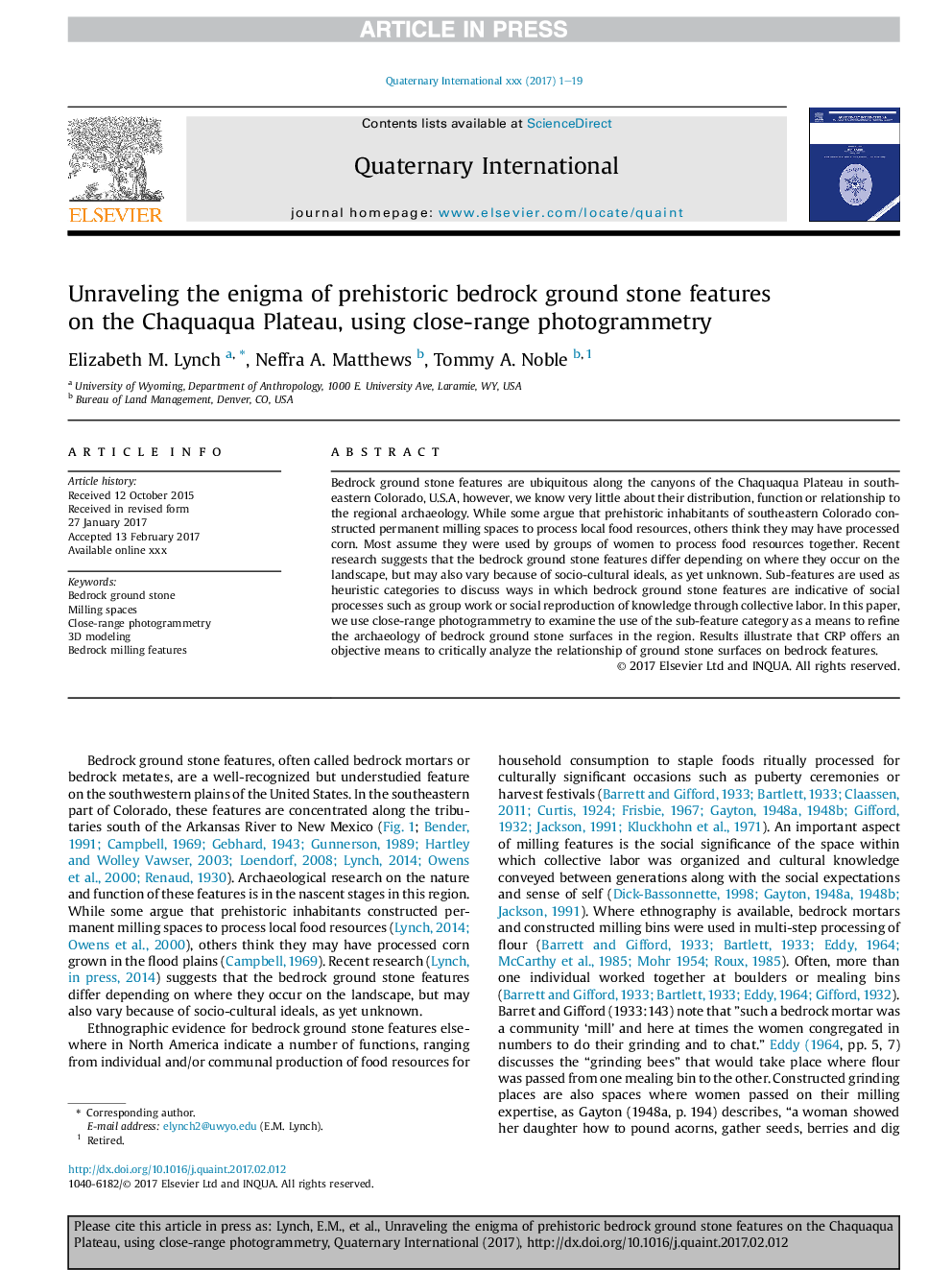| Article ID | Journal | Published Year | Pages | File Type |
|---|---|---|---|---|
| 5113408 | Quaternary International | 2017 | 19 Pages |
Abstract
Bedrock ground stone features are ubiquitous along the canyons of the Chaquaqua Plateau in southeastern Colorado, U.S.A, however, we know very little about their distribution, function or relationship to the regional archaeology. While some argue that prehistoric inhabitants of southeastern Colorado constructed permanent milling spaces to process local food resources, others think they may have processed corn. Most assume they were used by groups of women to process food resources together. Recent research suggests that the bedrock ground stone features differ depending on where they occur on the landscape, but may also vary because of socio-cultural ideals, as yet unknown. Sub-features are used as heuristic categories to discuss ways in which bedrock ground stone features are indicative of social processes such as group work or social reproduction of knowledge through collective labor. In this paper, we use close-range photogrammetry to examine the use of the sub-feature category as a means to refine the archaeology of bedrock ground stone surfaces in the region. Results illustrate that CRP offers an objective means to critically analyze the relationship of ground stone surfaces on bedrock features.
Related Topics
Physical Sciences and Engineering
Earth and Planetary Sciences
Geology
Authors
Elizabeth M. Lynch, Neffra A. Matthews, Tommy A. Noble,
